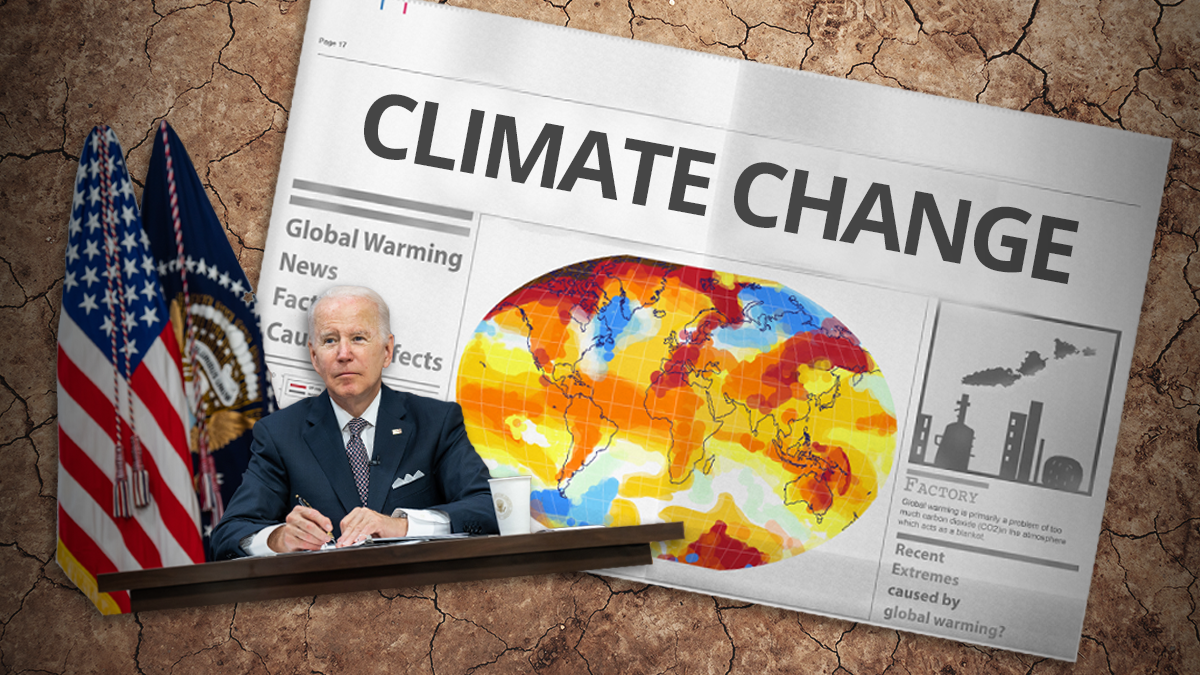The United States (US) and China generate the most carbon dioxide emissions globally. China is currently the largest emitter, with the US in second place. Both have more work than any other country ahead of the November 2022 United Nations Climate Change Conference (COP27) in Egypt.
A milestone US federal spending bill passed this month could bring new vigour to the global climate transition. With China ahead in taking countermeasures, does this signal a race between the world’s two largest emitters to net zero, and what could that mean for the rest of us?
The 2021 Climate Action Tracker paints a gloomy outlook for global greenhouse gas emissions. It verifies the Intergovernmental Panel on Climate Change (IPCC) Sixth Assessment Report that we are already at 1.2oC above pre-industrial levels. Even in the most optimistic scenario where all pledges and promises are met, we will still exceed the 1.5oC increase target and land at +1.8oC.
A more realistic appraisal based on countries’ actual policies and actions leaves us in a +2.7oC scenario. Imagine your hottest day in the year, which is now in the 40oC range for most of the world, and add 2.7oC to that. Incredible devastation is already being experienced at +1.2oC. These include floods in eThekwini and droughts in Nelson Mandela Bay in South Africa, heatwaves in the United Kingdom, wildfires in France, and rising sea levels in Tuvalu.
As COP27 approaches, the need for increased global action intensifies. While every country must do their part to keep the +1.5oC target alive, some matter more than others. The US has accumulated the largest historical emissions, which at 25% is slightly ahead of the European Union at 22%. China follows with 12.7%.
The US and China have lagged behind in global climate negotiations. Even when the US signed the Kyoto Protocol in 1997, its ratification was unanimously rejected by the country’s Senate. Since then, the US position has vacillated with Democrats opting for greater climate action and Republicans opposing it. Donald Trump’s administration, for example, pulled out of the Paris Agreement after its successful negotiation with US support under Barack Obama.
China’s participation in the COP conferences has aligned with the position of the G77+China, which centred on the principle of common but differentiated responsibility and respective capabilities. As China’s industrial development accelerated its emissions, this position — with no defined responsibilities as a developing country — put it at odds with the global climate movement.
Visit Daily Maverick's home page for more news, analysis and investigations
China, however, clearly appreciated the future. It adopted the Kyoto Protocol and began a policy movement of critical importance. In 1998, the National Climate Change Coordinating Group was moved into the then State Planning and Development Commission. In 2001, the 10th five-year plan (FYP) recognised climate change and set the first renewable energy targets. Since the 11th FYP, China has consistently overperformed on its targets, with the 13th plan delivering 530 GW from solar and wind by 2020.
The 14th FYP (2021-2025) aims to have 33% of China’s energy coming from non-fossil fuel sources, 18% from solar and wind. China is also investing $22-billion in ultra-high voltage transmission to enhance grid efficiency.
In the course of these actions over 20 years, China has built a formidable manufacturing capacity in the renewable energy domain, now producing three-quarters of the world’s supply in solar energy systems.
In contrast, the US, mainly due to the stance of Republican administrations on climate change, has been coming second. This despite it being the world’s largest economy with renewable energy, including hydropower and biomass, providing more than 21% of 2021’s total energy need.
The Joe Biden-Kamala Harris Presidency campaigned on taking climate change seriously and facilitating global leadership in this area, with a climate summit pre-COP26. But the administration has been silent for a long while — until now. This month, the US passed a milestone economic bill allocating $369-billion as a climate change response package — the largest ever federal provision for the issue.
The law includes incentives for switching to renewable energy and electric vehicles, support for research, funding to help the oil and gas industry transition, and assistance for adaptation in severely affected areas. Billions will be spent to speed up clean technology production such as solar panels and wind turbines, and$60-billion will be given to communities most affected by fossil fuel pollution. The bill’s authors say it will cut the country’s carbon emissions by 40% by 2030.
A long US political lull and fuel and energy security anxieties associated with the Ukraine crisis have dampened global momentum around the climate transition. This US decision is a huge political win and financial investment in a significant transition to a lower carbon economy. It also comes in the wake of considerable renewable energy and electric vehicle achievements in China.
A race between the world’s two largest emitters promises an accelerated pathway to a lower carbon future and is the best bet to making the +1.5oC project a reality. It suggests a combination of accelerated technology and new knowledge to support a global transition from fossil fuels to renewables as the dominant energy source.
Private capital could be used to improve climate finance access. Hopefully, for Africa and much of the developing world, the race means new aid and cheaper loan facilities to advance socio-economic development through clean energy.
Africa will have access to better, fit-for-purpose, low-carbon solutions to help achieve its Agenda 2063 goals. With the right strategy, the continent could benefit as two of the world’s superpowers race to become a larger global supplier of low-carbon energy solutions and infrastructure. Other scenarios are possible, but in the afterglow of a spate of courageous actions by the world’s economic superpowers, optimism is warranted. DM
Dhesigen Naidoo, Senior Research Associate, Institute for Security Studies (ISS) Pretoria.
First published by ISS Today




